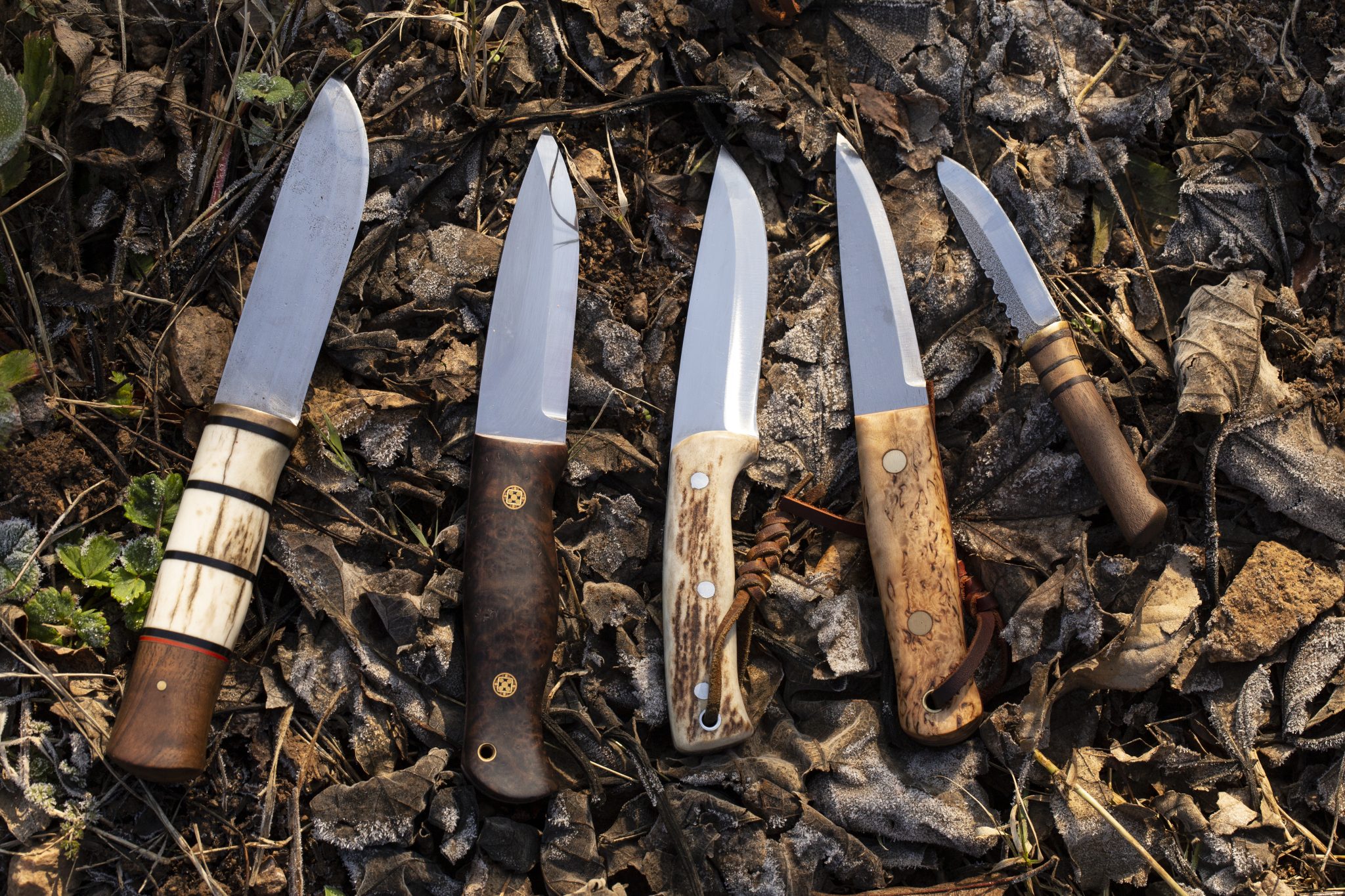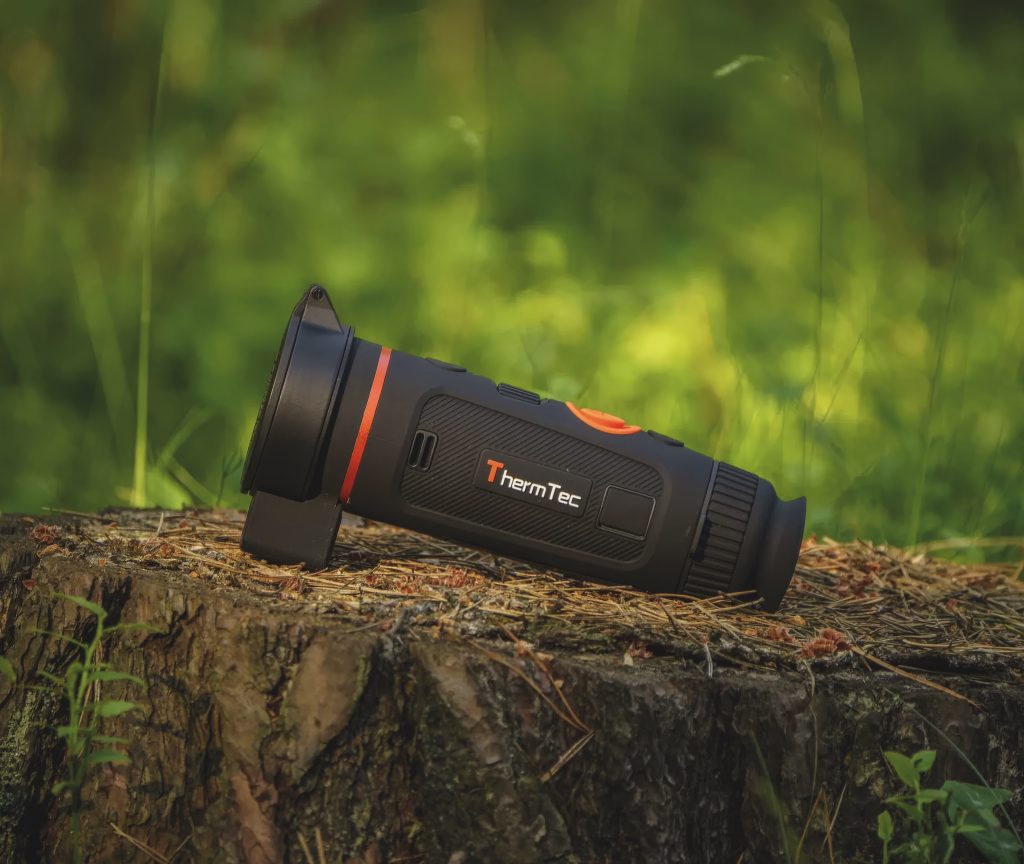Win CENS ProFlex DX5 earplugs worth £1,149 – enter here
Steel shot in old shotguns: time to make a decision?
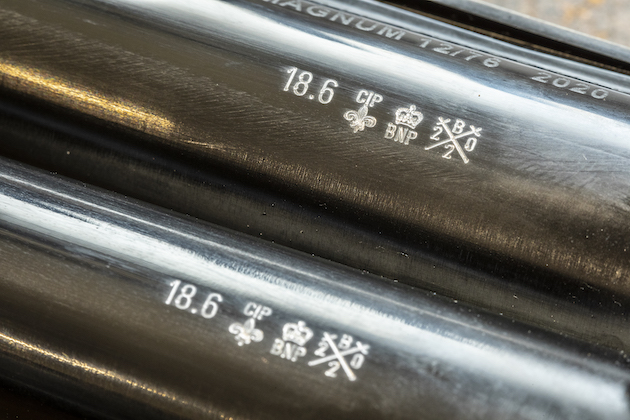 CIP and Fleur-de-lis stamp on modern gun
CIP and Fleur-de-lis stamp on modern gun
I’m sure that by now most of you will have read at least one article regarding the demise of lead shot and its replacement with steel and other alternatives. And you will certainly have heard many opinions about the change, a change that is under way whether we like it or not. There isn’t a firm date set for this change, but some game dealers are already saying that they will no longer accept game shot with lead after this season, and many are insisting that deer are only shot with non-toxic ammunition.
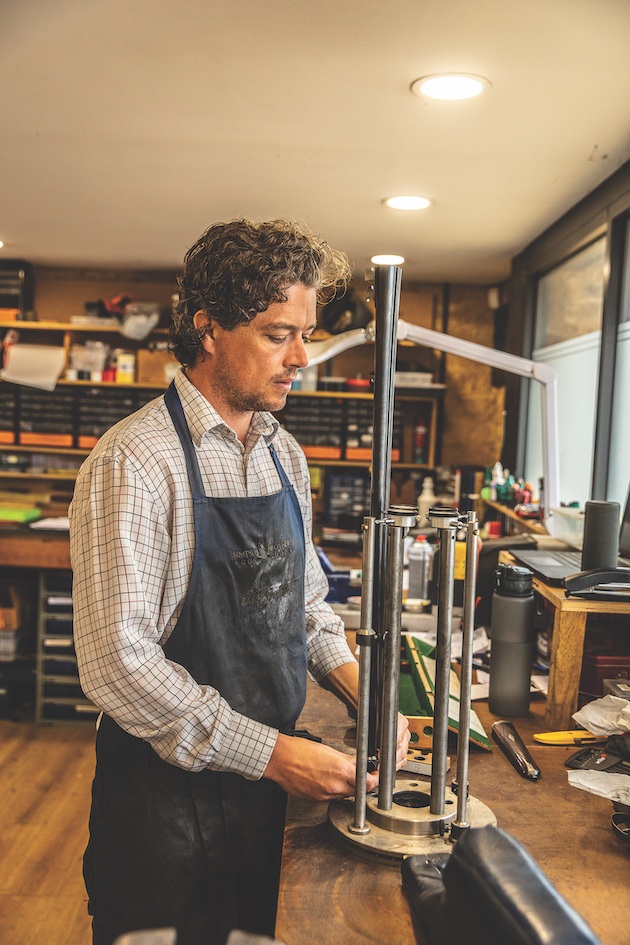
Matt Simpson uses a wall thickness gauge to check the barrels
Steel shot in old shotguns
This being so, perhaps it’s time to take a look through your gun cabinet and work out which of your guns are suitable and proofed for the two grades of steel cartridges that will eventually replace lead. I spent a morning talking about steel shot in old shotguns and picking the brains of Matt Simpson from Simpson Brothers’ Gun Shop, near Stamford, to try to work out just where I stand with my two guns – a Perazzi MX8 from the mid-1990s and an AYA No 2 side- by-side from the previous decade. They are both 12-bore and guns I love, but I wanted to find out if they were going to be suitable and safe for the steel changes. Neither has the fleur-de-lys (2006 onwards) or CIP (Commission Internationale Permanente) stamp mark, which will let you know that they are proofed for steel shot.
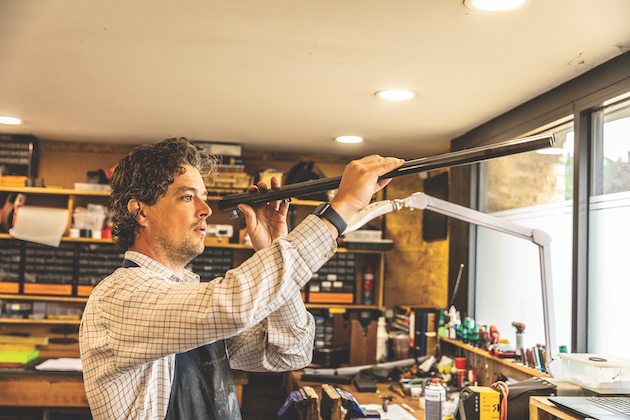
Before even considering steel shot, get your barrels inspected for bulges
Choke issues
Steel shot cartridges will fall into one of two categories – standard steel and superior steel. The majority of relatively modern guns will be fine for standard steel cartridge pressures so long as they fit your chamber length and are fired through a choke no tighter than half (no tighter than half choke is for all steel shot at the moment). Matt feels that it would be wise to consider a slightly wider choke than this to give yourself and your gun a little leeway, and recommends a choke of 3⁄8th or wider. Superior steel cartridges are higher pressure and usually 3in to 3½in long. This is when things will go badly wrong if your gun isn’t fit for purpose or chambered for this length cartridge. So, knowing what your gun is proofed for, what chokes you have and the chamber length is of utmost importance when judging whether you can use steel shot in old shotguns.
One thing that Matt says is a no-no is using one of those choke measuring tools you put down the end of your barrel to try to work out what choke you have. He says they are most inaccurate and you need an internal bore gauge, which is the proper kit to measure choke dimensions. The choke of a gun can start some way down the barrel and the muzzle dimension is only one indication of the choke you have. Also, if your barrel has a stamp giving a certain choke denomination, don’t take that as gospel. Many sets of barrels will have been worked on over time and it could well be that work was done in the past to change the choke or barrel length. If you have any doubts or, if like me, your guns don’t have the fleur-de-lys or CIP stamp, it’s essential that you get a competent gunsmith to take measurements for you of the barrel wall thickness with a wall thickness gauge and the choke constriction. They are easy jobs to do and will help you decide whether changes are needed.
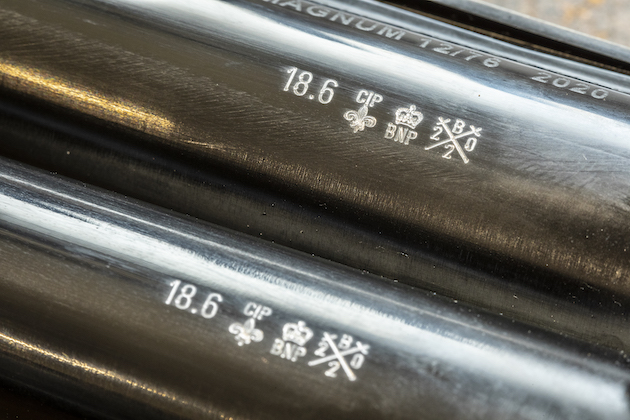
Steel-proof: the fleur-de-lys and CIP marks
Older guns
Old guns and family heirloom guns pose another dilemma for their owners, and especially if they have tight chokes. Many old side-by-sides will have short chambers – 65mm or 2½in. There are now some light and short standard steel cartridges available for guns like this, so that isn’t a problem. Tight chokes are though. Matt says that it’s an easy job to remove material to widen the choke, but then the gun will by law have to be reproofed. Is this a gamble you’re willing to take?
As Matt says: “You’ve got to treat these guns as antiques rather than as fowling pieces.” If it’s a 120-year-old gun, you can’t treat it as you would a modern-day gun and expect it to do the same work. Matt says a calculation of how often you use the gun, what type of shooting you do and whether it would make sense to just spend a little extra per cartridge and only shoot bismuth through it. If your gun is precious to you for whatever reason – passed down through the family or just holds a special place in your shooting past – remember that reproofing is a pass or fail situation. It will either come back as a passed gun or sometimes as scrap metal. If the failure isn’t catastrophic, the gun can sometimes be repaired and resubmitted, but don’t count on it.
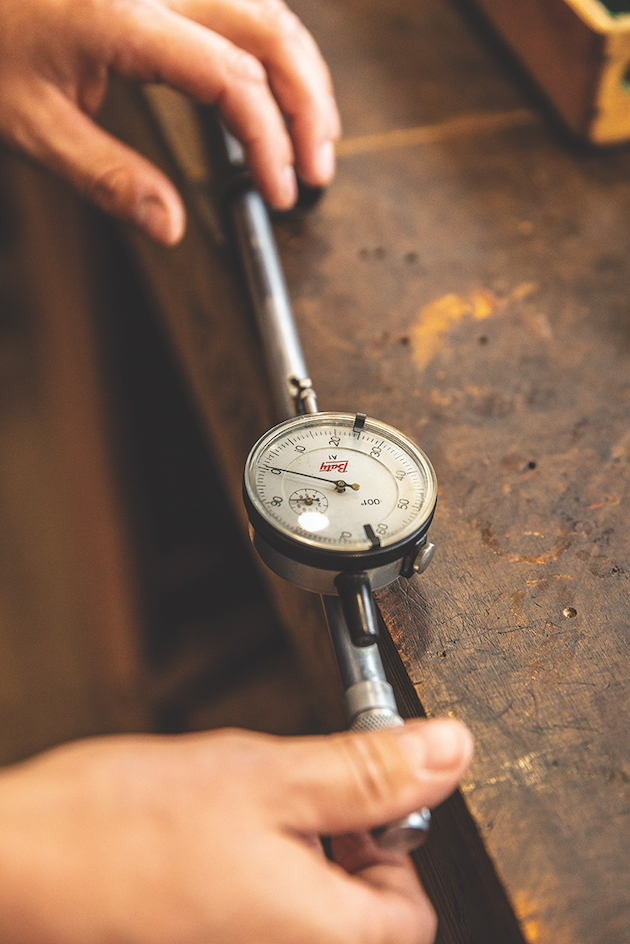
An internal bore gauge is the proper tool for measuring choke
For most of us, quarter choke and standard steel cartridges will, in reality, be plenty for the shooting we do. I have spoken to Geoff Garrod and Peter Theobald, Sporting Gun’s pigeon experts, about standard steel cartridges and they were happy with the performance and killing power for decoying pigeons at sensible ranges. They both went from No 6 lead shot to No 5 in steel to help give the lighter steel a bit more punch. It’s only when you start to take on birds at 40 yards and over that changes may be needed. Perhaps consider investing in a modern gun for high bird days and keep your side-by-side for smaller days or special occasions?
What these changes will do to older gun prices in the long run is anybody’s guess, but Matt says: “Gone is the time when you’d buy a ‘golden era’ Purdey and stick it under the bed for a pension. These are old guns and antiques and made to shoot 26g of No 6 shot. They didn’t even have high bird shooting when these guns were made. You wouldn’t take a 100-year-old sports car around Silverstone three times a week and then be annoyed when it breaks down.”
More tips on using steel shot in old shotguns
Damascus-barrelled guns are not suitable for steel, so bismuth will be your only sensible option if you want to continue using it in anger. If you’re a diehard side-by-side shooter and want to continue shooting with this orientation of barrels, there are plenty of new guns that are now steel proofed and Matt even suggests considering a live pigeon gun, which were heavier and more robust guns made to shoot heavier loads, though they will still need checking over for propriety and probably won’t be suitable for superior steel.
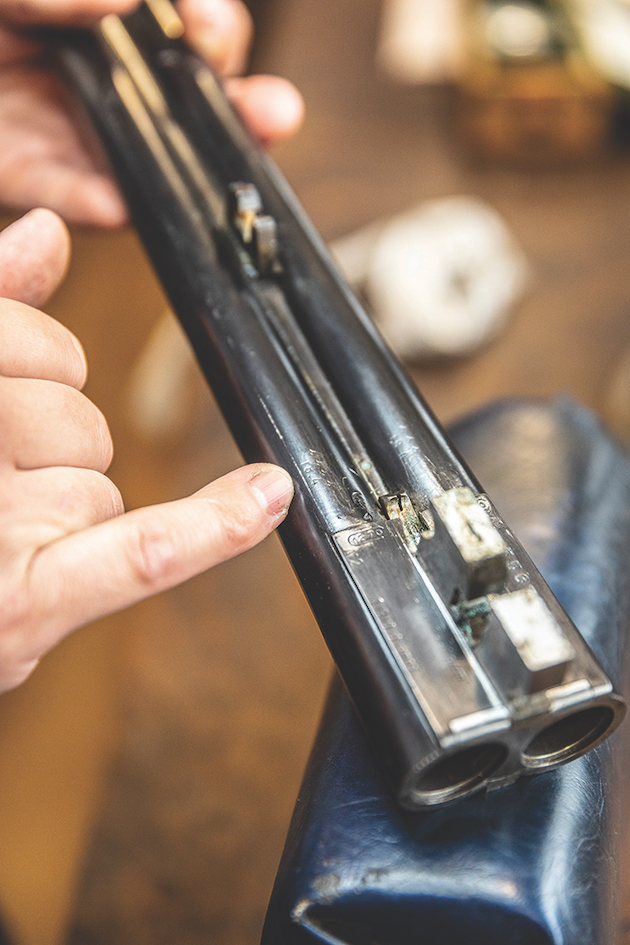
Richard Faulks has a tough decision to make about his AYA
Emotional and practical
So, where does this leave me and my guns using steel shot in old shotguns? My Perazzi will be fine for standard steel cartridges and has one multichoke barrel and the fixed choke is 3/10th. I don’t go on any high bird shoots, so I’m going to keep that as it is and start to experiment with steel shot. My AYA is slightly more difficult to decide upon as the chokes are fixed at quarter and half. Matt’s measurements show that the barrels are still fine and not worn, with good wall thickness. Do I have the half choke eased and then reproof the gun or take a hit now and find myself a steel-proofed gun or shoot bismuth only? It’s not a gun I use often, but it makes me smile when I do. It’s an emotional as well as practical decision and I’ve yet to make up my mind.
Modern guns will mostly be manufactured for superior steel now and many are starting to have more metal at the muzzle to allow for higher pressures at the choke. Cartridge manufacturers are working on many new and innovative solutions for older guns and different materials for shot. There are noises being made about chokes in new guns that will allow for three-quarter and full choke for steel shot and Lord only knows what may appear on the market next.
I have watched YouTube videos showing people shooting steel cartridges through all kinds of guns and choke and getting away with it. It’s certainly not something that is recommended by Matt or any cartridge manufacturer, and the fact that it didn’t go wrong on the videos does not mean that it won’t at some point, even with the next shot. So, if you’re in any doubt at all over any gun you hope to use with steel cartridges, visit a reputable gunsmith and ask them to check your gun over and advise you. It would be irresponsible not to and it may well save you and your gun.
What we’re trying to say here is don’t bury your head in the sand about the changes coming, but don’t panic. There is a workable solution to all situations and technology will almost certainly develop over the coming months and years, and the more information you have about what’s in your cabinet, the easier it will be to make the right decisions.
Related Articles
Get the latest news delivered direct to your door
Subscribe to Shooting Times & Country
Discover the ultimate companion for field sports enthusiasts with Shooting Times & Country Magazine, the UK’s leading weekly publication that has been at the forefront of shooting culture since 1882. Subscribers gain access to expert tips, comprehensive gear reviews, seasonal advice and a vibrant community of like-minded shooters.
Save on shop price when you subscribe with weekly issues featuring in-depth articles on gundog training, exclusive member offers and access to the digital back issue library. A Shooting Times & Country subscription is more than a magazine, don’t just read about the countryside; immerse yourself in its most authoritative and engaging publication.



